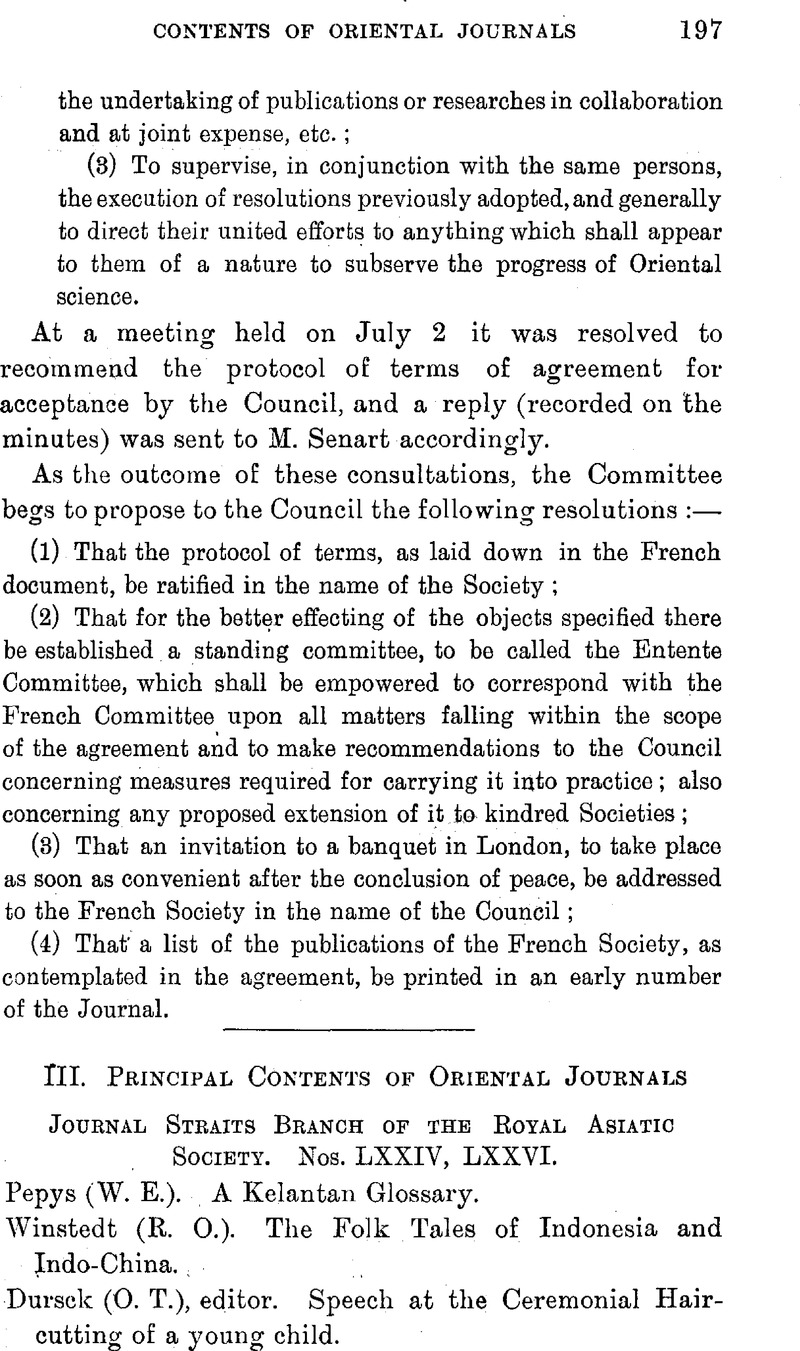No CrossRef data available.
Article contents
III. Principal Contents of Oriental Journals
Published online by Cambridge University Press: 15 March 2011
Abstract

- Type
- Notes of the Quarter
- Information
- Copyright
- Copyright © The Royal Asiatic Society 1918
References
1 MrsStevenson, Sinclair, The Heart of Jainism, p. 151.Google Scholar It would be tempting to equate Zain to Jaina, but Mr. Kato Naoshi in “Eastern Ideas and the Japanese Spirit” (Trans, and Proc. of the Japan Society, xiii, p. 121)Google Scholar equates the Zen sect with the Dhyāna school with its three powerful sub-sects, the Sōtō, Rinzai, and Ōbaku. He observes that its tenets closely represent the original form of Gautama's own teaching, as it practises zazen or mental concentration on the Absolute. Kaiten Nukariya also says that Zen is the Sinico-Japanese abbreviation of the Sanskrit dhyāna or meditation: The Religion of the Sumurai, 1913, p. xix.Google ScholarZazen is “sitting in meditation”, p. xxi and p. 188.Google Scholar




